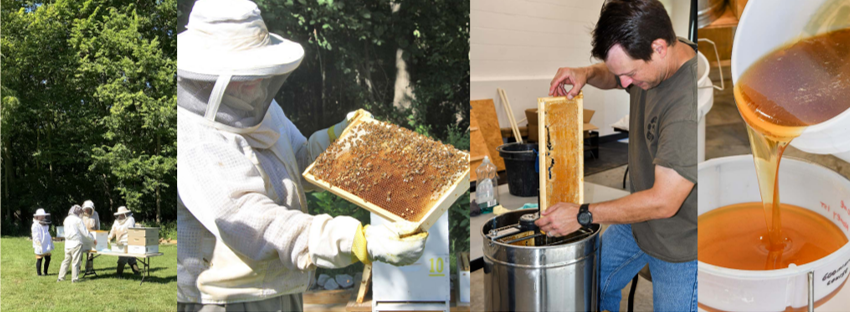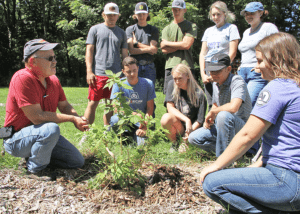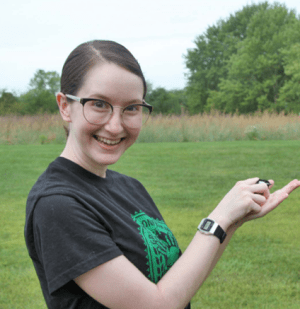Outdoor living labs expand the classroom
“Can we take this class outside?” The answer is yes for students in LLCC science, ag and other courses thanks to living labs across and beyond campus.
The newest outdoor lab is West Lake Nature Grove, adjacent to campus at 2321 West Lake Shore Drive. The land was donated to the LLCC Foundation by Dean "Robbie" Robert Jr. in memory of his friend, Lloyd Inslee Jr., who lived on the property for more than 50 years. Robert specified that the land be used for educational purposes.
Currently the Grove houses an apiary with multiple beehives and numerous berry bushes and trees planted for research purposes. Soon, special commemorative benches will be installed.

Dave Cox, professor of biology, partnered with the Prairie State and Lincoln Land Beekeeping Associations to support the apiary and provide mentoring to interested students and community members. "Academically, it's a wide-open slate for any class to use," says Professor Cox. "Chemistry students could analyze the honey produced in teh hives, microbiology students could research the antimicrobial benefits of honey. As beekeepers typically lose 40% of their colonies each year, my biology students conducted an initial research project last spring as to why this occurs. They performed autopsies on bees, looking for parasites and other possible causes of bee colony loss."

Bill Harmon, professor of agriculture, utilizes the Grove in agronomy and horticulture classes. "We planted grapevines, apple trees and blackberry bushes last spring, but unfortunately the deer enjoyed most of them. We learned from that experience, and this fall, we will replant with better fencing. We also plan to cover some of the berry bushes with netting so the bees can't reach them and compare those to bushes without nets to illustrate the importance of bees and pollination.
“This is just another way to give students hands-on learning, so instead of watching a video about honeybees, we can study them in person (from 10 feet away), and it drives home the lesson of what would happen if we lost honeybees." As to the continuing decline in the bee population, he noted, "Pesticides are part of the reason we're seeing fewer wild bees, and since we now farm from ditch to ditch, there are fewer clover patches to support the bees."
Professor Harmon says another benefit of the Grove is that students are exposed to a different form of agriculture. "They learn how to make money harvesting honey and how beekeeping can increase yields in orchards."
Other outdoor labs used by ag students include the Kreher research farms in Christian County and near Blue Mound, where students conduct corn and soybean trials, and a fiber hemp plot planted in a field near campus.

Meanwhile, the college’s outdoor bird banding station (above) has begun its 20th banding season (two are held per year.) Last spring, students and volunteers with the Lincoln Land Association of Bird Banders banded 1,776 birds of 99 species. There were 467 repeat captures (birds banded earlier during the season) and 105 return captures (birds banded during a previous season). Two of the more interesting recaptures were a Blue Jay originally banded in fall 2013 and a Downy Woodpecker and Black-capped Chickadee that were both originally banded in fall 2015. In total, over 19 seasons, 31,574 birds have been banded. Data from the banding is added to a global database that tracks migration patters, giving students undergraduate research experience.
Story published in the LLCC FORWARD magazine, October 2022.
